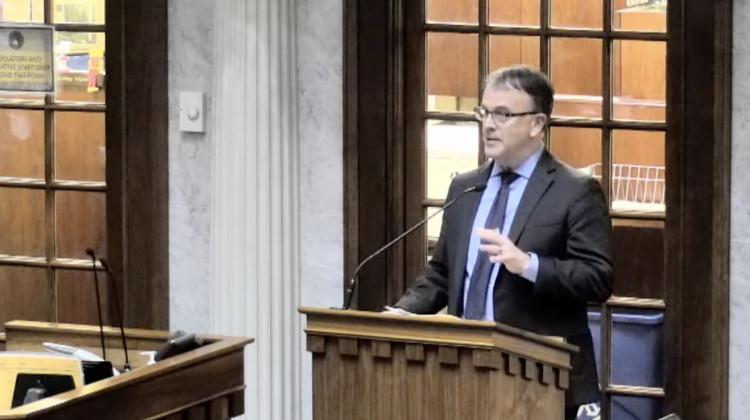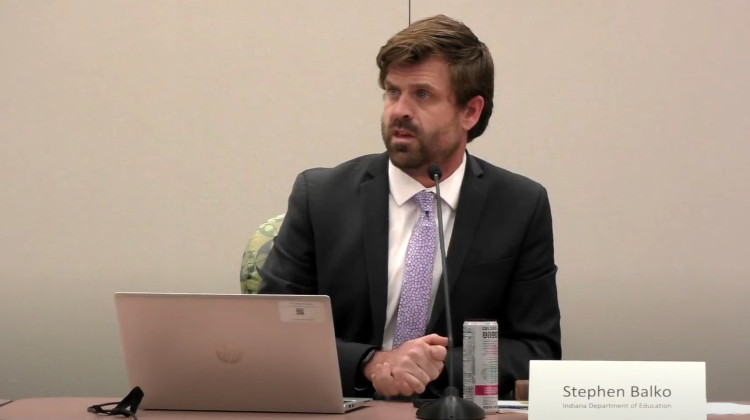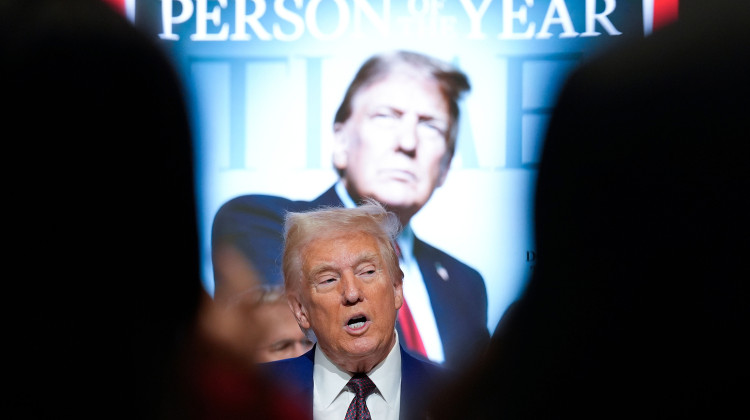Bridge International Academies has set up more than 200 schools in Kenya over the past four years, and plans to open 50 more in January.
Using a school-in-a-box model, Bridge's founders say it gives primary schoolkids a quality education for roughly $5 a month.
"We believe that we can be educating at least 10 million pupils around the world that come from families who live on less than $2 a day," says Bridge co-founder Jay Kimmelman. "We believe that we can give them an education ... that's truly globally competitive."
Primary school in Kenya starts at age 6 and runs for eight years. It's officially free for all children, but parents regularly complain that government schools are overcrowded, understaffed and ineffective. Teachers often don't show up, and parents are often expected to pay bribes to keep their kids in the "free" schools.
"What we are trying to do is provide parents a real option," Kimmelman says.
To accomplish this, Bridge has setup a highly structured, technology-driven model that relies on teachers reading standardized lessons from hand-held tablet computers.
Lessons From An E-Reader
On the surface, the Bridge school on the western edge of Nairobi looks much like other schools in poor parts of the developing world. The simple buildings are made of sheet metal and rough timbers. There's no electricity. Rows of wooden desks face a blackboard in the sixth grade classroom.
The teacher glances back and forth from her black tablet to the students in front of her as she runs through an English lesson.
"Very good," she announces as reads the directions from the tablet. "Give them a super-cheer," she continues and the students shout in unison "Super!"
The e-reader not only delivers the lesson script to the teachers, but it also acts as an electronic time sheet, grade book and supervisor. The tablet tracks what time the teacher arrives, what time she leaves, and how long she spends on every lesson.
The administrative side of the entire school can be run off a smartphone, says David Mwangi, the manager of a Bridge school in Nairobi. He can admit new students, submit test scores and send payroll time sheets back to Bridge's central office in Nairobi all from his cheap Chinese smartphone.
Tuition collection is also automated. Parents pay their monthly school fees through Kenya's mobile money system, M-Pesa, which allows people to transfer cash via text message.
'The Magic' Of Replication
The exact same lesson being taught in this classroom is being taught in every other sixth grade class at Bridge schools across the country, says Bridge co-founder Shannon May.
"If you were at one of the other 200 locations right now, you'd be seeing the exact same thing," she says. "In some ways, it is kind of the magic of it."
That "magic" of standardized lesson plans changes the role of the teacher. It allows Bridge to hold down costs because it can hire teachers who don't have college degrees.
It also allows Bridge to rapidly expand and bring in more "customers."
That's Bridge's goal. Its target customers are the hundreds of millions of parents around the world who live on $2 day and yearn for better schools for their children.
To keep tuition costs low, Bridge depends on large class sizes. Their ideal class size is 40 to 50 kids, but the classes can get upward of 70 students.
Over the past four years, Bridge has grown to be the largest chain of private schools on the continent. And some advocates for universal education find this troubling.
There are other private schools across Africa seeking to teach the so-called poorest of the poor, but their models and size are quite different from those of Bridge.
Criticism Of Method
"If somebody suggested that kind of an educational model, in this country they would be laughed out of the educational community," says Ed Gragert, the U.S. director of the Global Campaign for Education, which advocates for increased access to education in the developing world.
"That's not how kids learn best," he says. "Kids learn by interacting with each other. It seems like we are going back for the sake of somebody making a profit to where a robot could teach that class."
He says, however, he does admire the rigor of the Bridge model. School is in session from 7:30 a.m. until 5 p.m. five days a week. On Saturday, classes run from 9 until 4.
May bristles at her teachers being called robots, but she does acknowledge that Bridge has a fundamentally different view of the role of its teacher.
"They are not content producers," May says of her teachers.
Instead Bridge hires experts to script the lessons; the teacher's role is to deliver that content to the class. May says the traditional model where teachers are expected to be experts on everything doesn't make sense — particularly in a place where teachers may have had poor educations themselves.
"What the child is able to learn is always limited by what the teacher knows," she says. "So you can never have the child leapfrog previous problems within that town, city or country."
She also says it's crazy to have fourth grade teachers in schools attempting to reinvent the wheel on how to teach fractions.
Other critics of Bridge say the private school chain is undermining the public education system by siphoning off kids from the most motivated families.
A For-Profit Approach
But May says her company is helping to solve one of the biggest problems facing the poorest of the poor — the lack of access to decent education. And in a field that has long been the domain of governments, churches and nonprofits, she takes unabashedly capitalist approach.
"I think there's something really important about approaching this problem from a for-profit perspective," she says.
The for-profit model forces each school to contain costs, and May says it makes Bridge accountable to its paying customers: the parents.
"Our customer can put us out of business. They can say, 'This isn't good. I don't want it, it's not useful. It has no value to me. That's not how I want to spend my 400 shillings (about $5) this month.'"
This is a power that poor families certainly don't have over the bureaucratic Kenyan public schools. It's also a power they can't wield if their school was being run by some distant, international donor.
Bridge is already raising private capital to fund its planned expansion outside of Kenya. The company is looking to move in to Africa's most populous nation, Nigeria. According to UNICEF, Nigeria has roughly 5 million primary school aged children who don't go to school at all.
9(MDEwMDc1MzM3MDEzNDczOTA0MDc1MzViMQ001))
 DONATE
DONATE








 Support WFYI. We can't do it without you.
Support WFYI. We can't do it without you.